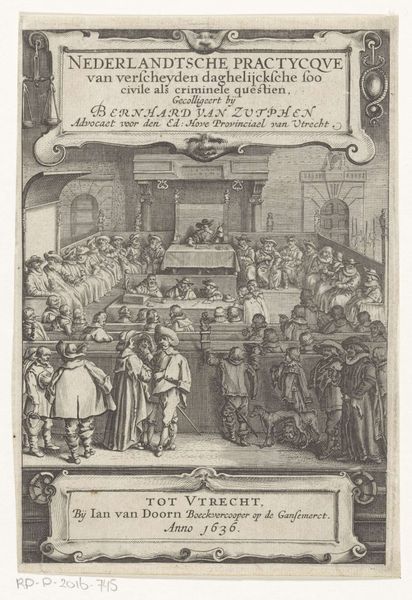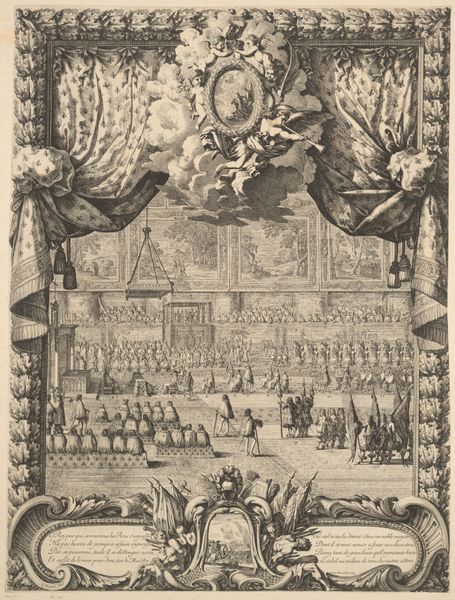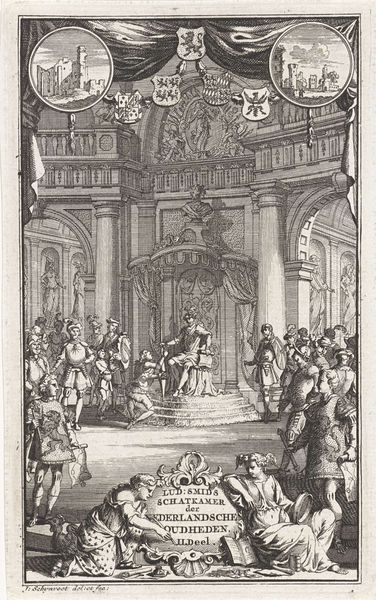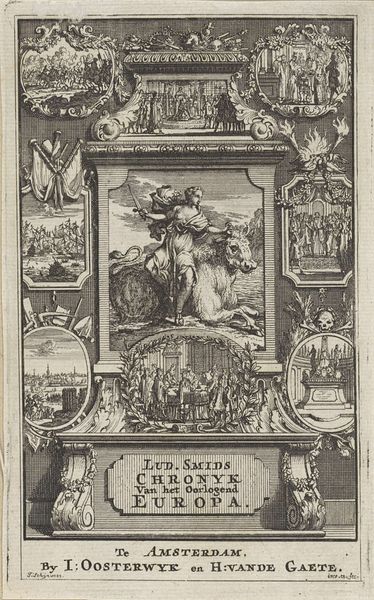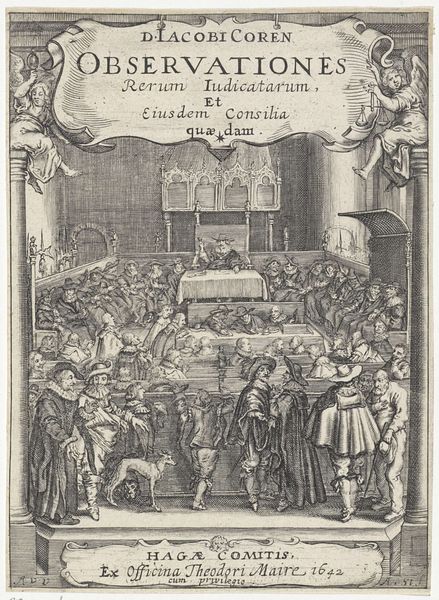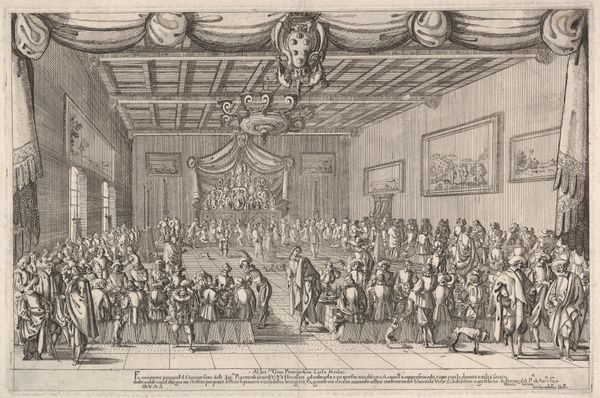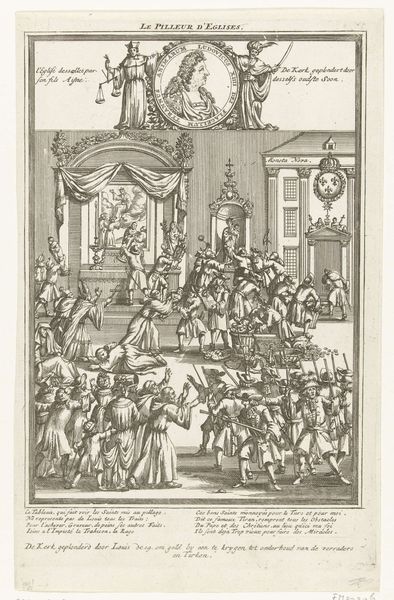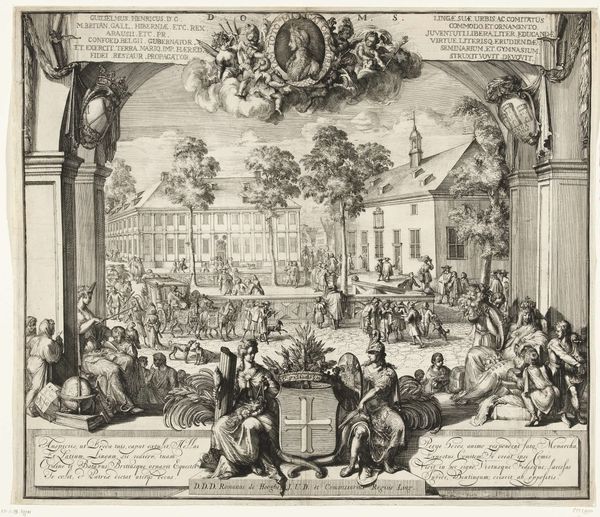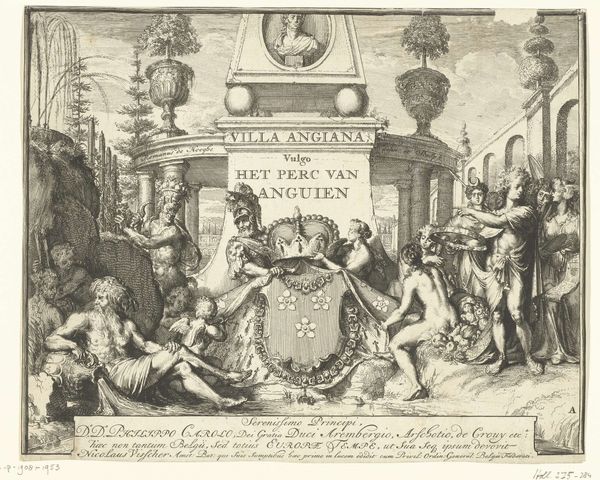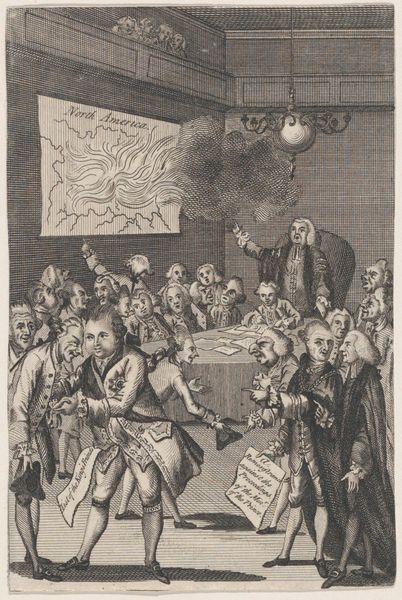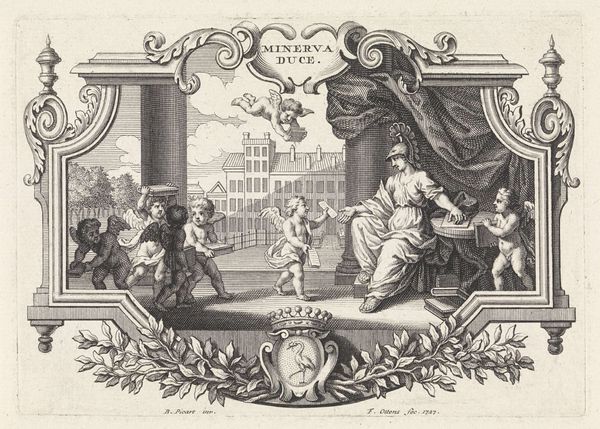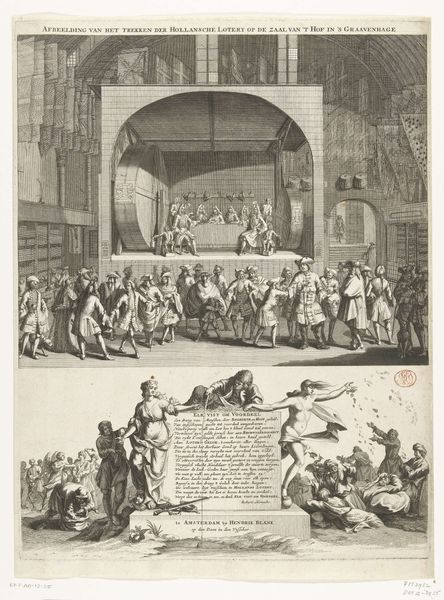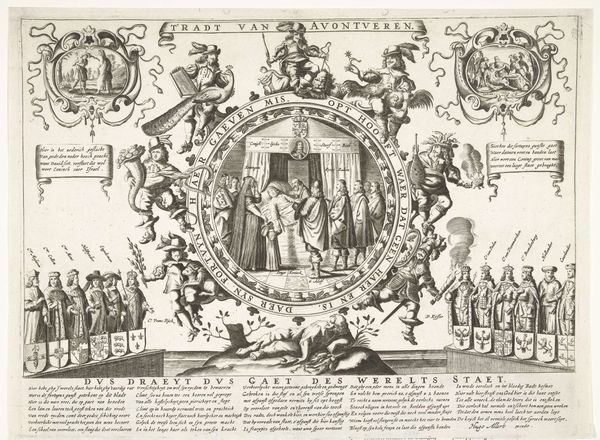
print, engraving
#
portrait
#
medieval
#
narrative-art
# print
#
engraving
Dimensions: 184 mm (height) x 137 mm (width) (bladmaal)
Editor: This print, "Christian IV i retten" from 1642, by Albert Haelwegh, feels very much like a stage production, with the crowd as the audience. The crown hovering above seems so theatrical, like a spotlight. What can you tell me about it? Curator: The crown indeed is a powerful emblem. Consider how often crowns, or fragments of them, recur in our collective visual language, signaling authority, legacy, and sometimes even lost empires. Here, it acts as a symbol of royal power but consider the context. Editor: What do you mean by context? Curator: This image, despite its seemingly straightforward depiction of justice, is rife with encoded meanings, particularly during a time of political upheaval. Note how the figures are arranged and the artist's use of perspective. Does anything seem unusual, perhaps symbolic, about their placement? Editor: It’s like they're all vying for position, a push and pull happening in the composition. Curator: Exactly. Haelwegh has captured a pivotal moment, not just a simple courtroom scene. Consider what that visual tension suggests about the social dynamics of the time, the anxieties around succession, and perhaps even challenges to the monarch’s absolute authority. Editor: I see. So the image, while seemingly literal, uses symbolic imagery to convey deeper political meanings and anxieties of that era. It uses both stagecraft and symbolic representation to speak truth to power. Curator: Precisely. The visual language, particularly through those potent symbols like the crown, helps us decode the cultural memory embedded within this print. Editor: Fascinating! I'll definitely look at similar historical prints with a new appreciation for how much those visual cues communicate.
Comments
No comments
Be the first to comment and join the conversation on the ultimate creative platform.
